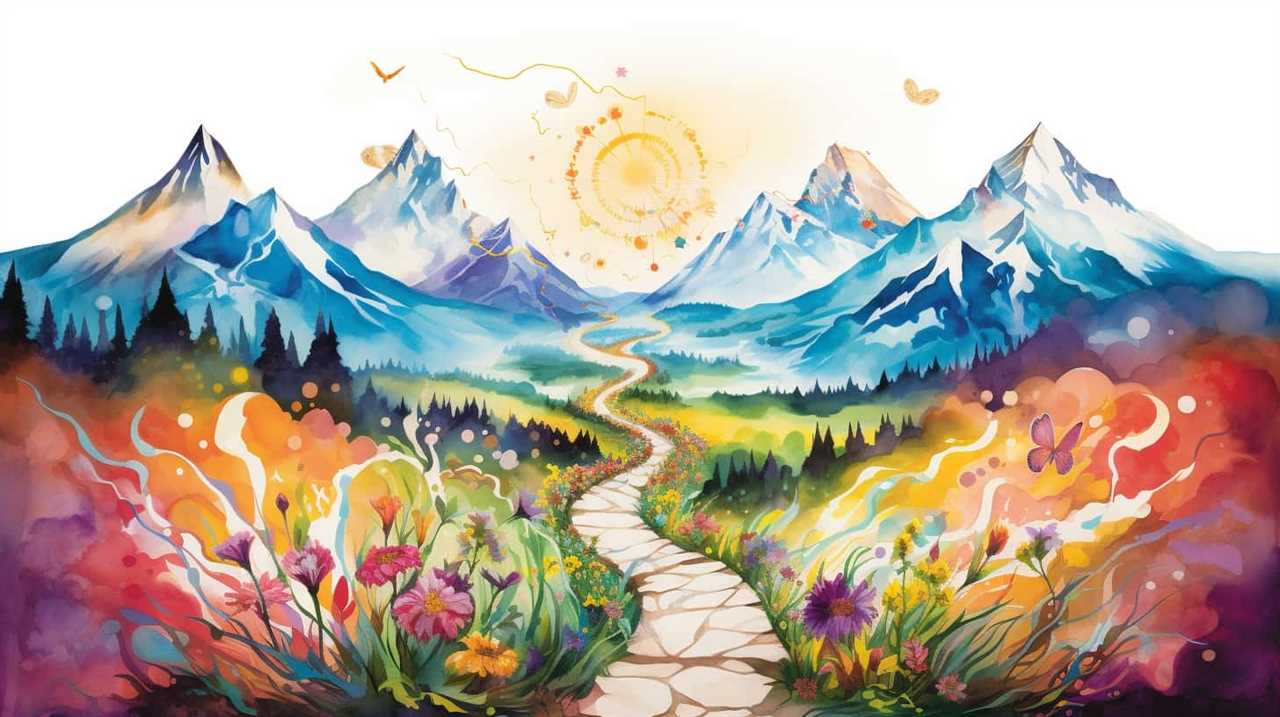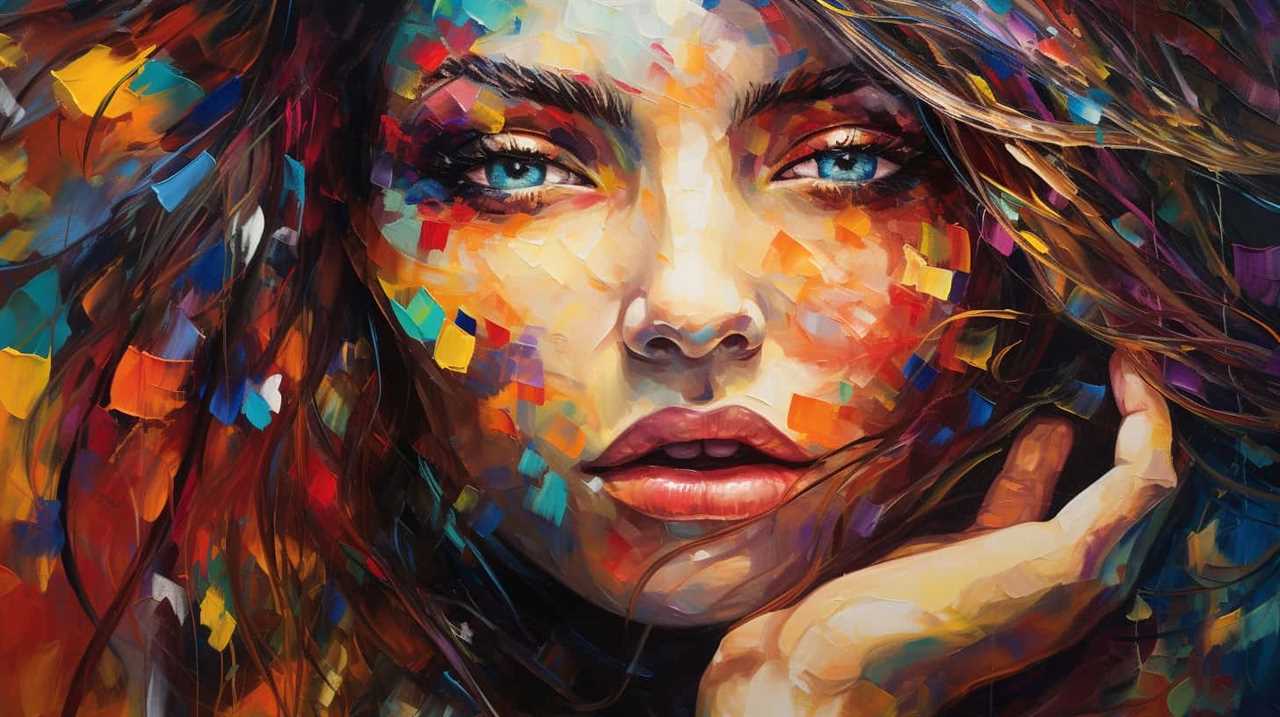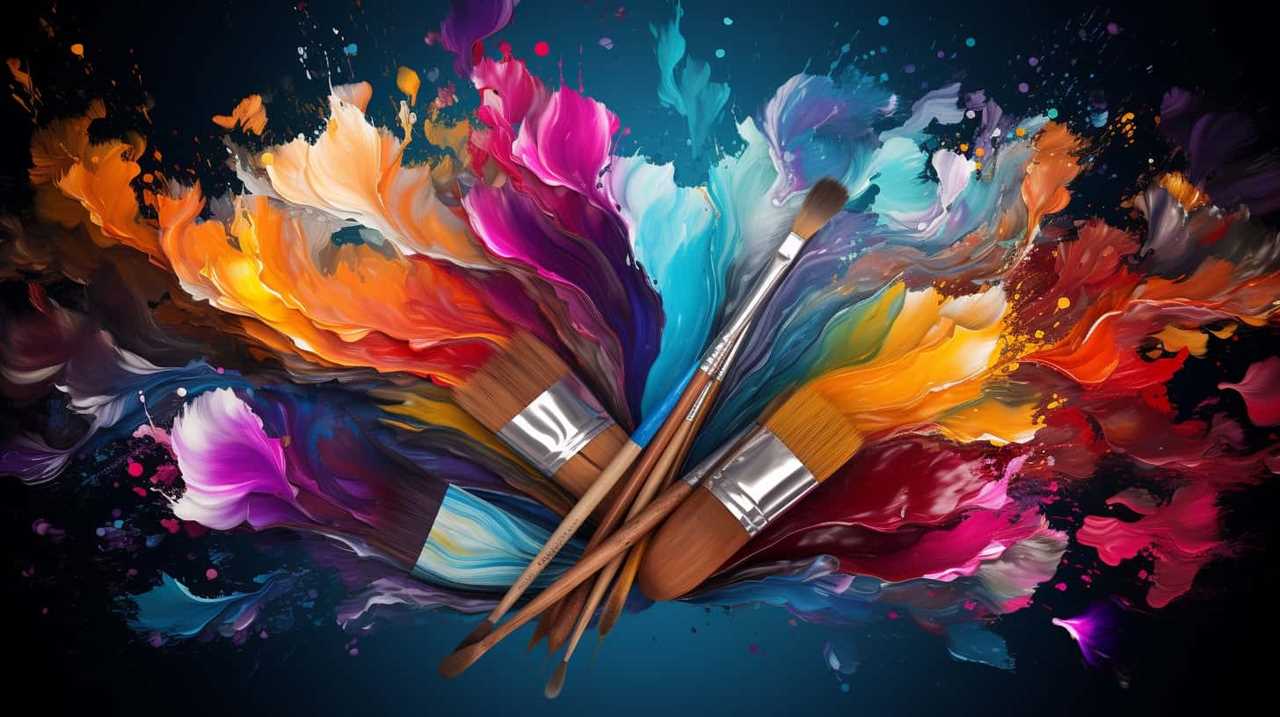Oh, the wonders of societal advancement! During this captivating journey, we have been blessed by the brilliance of 7 modern innovators who fearlessly challenge traditional norms and ignite the flames of freedom.
These visionaries, armed with paintbrushes, cameras, and fearless hearts, have woven their art into the very fabric of our changing world. From Banksy’s sly social commentary to Ai Weiwei’s unyielding stance on art and politics, their voices resonate through the corridors of time.
Yayoi Kusama’s kaleidoscopic influence, Marina Abramović’s profound reflections, and JR’s art as a catalyst for change guide us toward a brighter future. Kerry James Marshall’s exploration of racial politics and Tracey Emin’s artistic response to cultural shifts serve as mirrors to our ever-evolving society.
Together, they paint a vibrant tapestry of liberation and inspire us to march forward, hand in hand, towards a world where creativity knows no bounds.
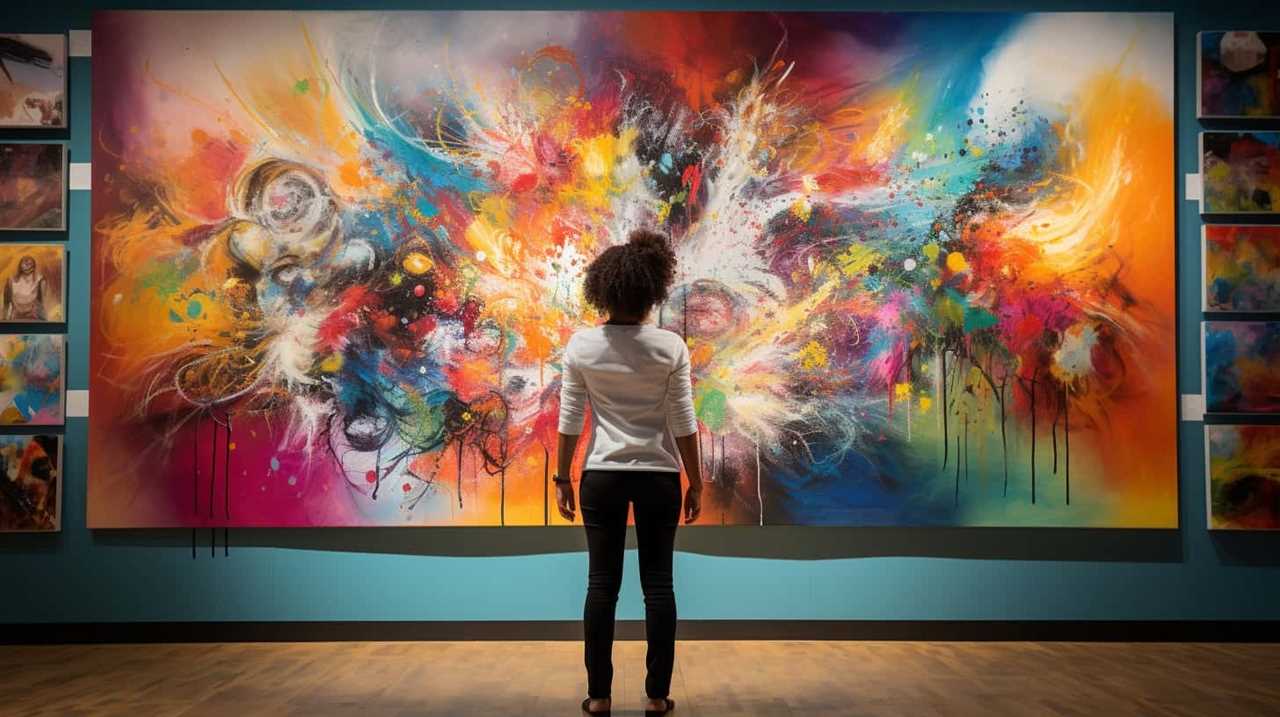
Key Takeaways
- Banksy and Ai Weiwei use their art as a form of artistic activism to challenge conventional norms and institutions, encouraging viewers to question the status quo and take action.
- Yayoi Kusama’s art challenges traditional notions of art and has had a significant influence on mental health discussions, reducing stigma, and providing a platform for understanding and expressing mental health issues.
- Marina Abramović’s art reflects and challenges societal values and norms, addressing themes of technological advancements, identity, vulnerability, and human connection, and promoting dialogue for societal change.
- JR, Kerry James Marshall, and Tracey Emin are contemporary artists who also challenge traditional notions of art and social norms, using their art to shed light on social issues, critique power structures, and explore themes of love, sexuality, and identity, striving for a more liberated and inclusive future.
Banksy’s Take on Societal Change
In our exploration of modern creatives’ perspectives on society’s evolution, we delve into Banksy’s unique take on the changes unfolding within our communities. Banksy, a renowned street artist, is known for his anonymity and thought-provoking art that challenges the conventional norms of society. One of the key aspects of Banksy’s work is his refusal to conform to the traditional art world and its institutions. While institutional art is often confined within the walls of galleries and museums, Banksy’s art breaks free from those constraints and reaches the masses on the streets.
Banksy’s anonymity plays a significant role in his art’s impact. By remaining anonymous, Banksy ensures that the focus remains on the message rather than the artist’s identity. This anonymity allows him to comment on societal issues without the fear of personal repercussions. It also adds an air of mystery and intrigue, capturing the attention and curiosity of the viewers.
Street art, as Banksy practices it, challenges the dominance of institutional art. It highlights the accessibility and inclusivity of art, making it available to everyone, regardless of their background or social status. Banksy’s art disrupts the traditional notion of art being confined within the walls of galleries and museums, taking it to the streets where it can spark conversations and provoke thought among a wider audience.
Ai Weiwei’s Perspective on Art and Politics
From our perspective, during the time of Ai Weiwei, art and politics became intricately intertwined. Ai Weiwei, a Chinese artist and activist, is known for his artistic activism and his fearless exploration of the intersection of art and politics. He used his art as a powerful tool to challenge authority and bring attention to social and political injustices.
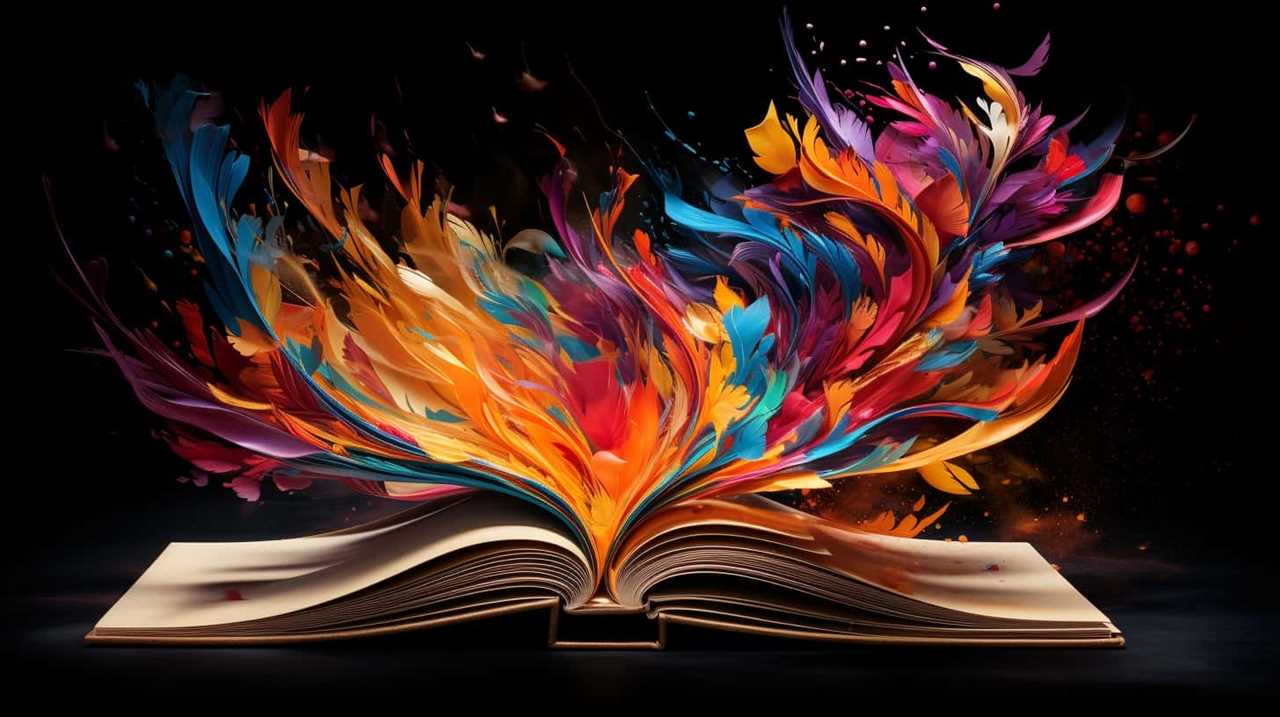
Ai Weiwei’s perspective on art and politics was shaped by his personal experiences and the oppressive regime in China. He believed that art had the potential to ignite change and inspire people to question the status quo. Through his installations, sculptures, and social media presence, Ai Weiwei fearlessly confronted issues such as government corruption, human rights violations, and censorship.
His works often served as a form of artistic activism, encouraging viewers to reflect on the state of society and take action. Ai Weiwei’s art wasn’t just about aesthetics; it was a call to arms, a rallying cry for justice and freedom.
Transitioning into the subsequent section about Yayoi Kusama’s influence on contemporary society, it’s important to note the different approaches these two artists take in their respective practices. While Ai Weiwei uses art as a tool for political activism, Kusama’s art is more focused on personal expression and the exploration of the self. However, both artists have left a lasting impact on contemporary society, challenging the boundaries of art and inspiring new generations of creatives to use their voices for change.
Yayoi Kusama’s Influence on Contemporary Society
Yayoi Kusama, an iconic figure in the art world, has made a profound impact on contemporary society through her unique artistic vision and approach. Her art not only challenges traditional notions of art but also addresses important social issues, making a powerful statement about the world we live in.
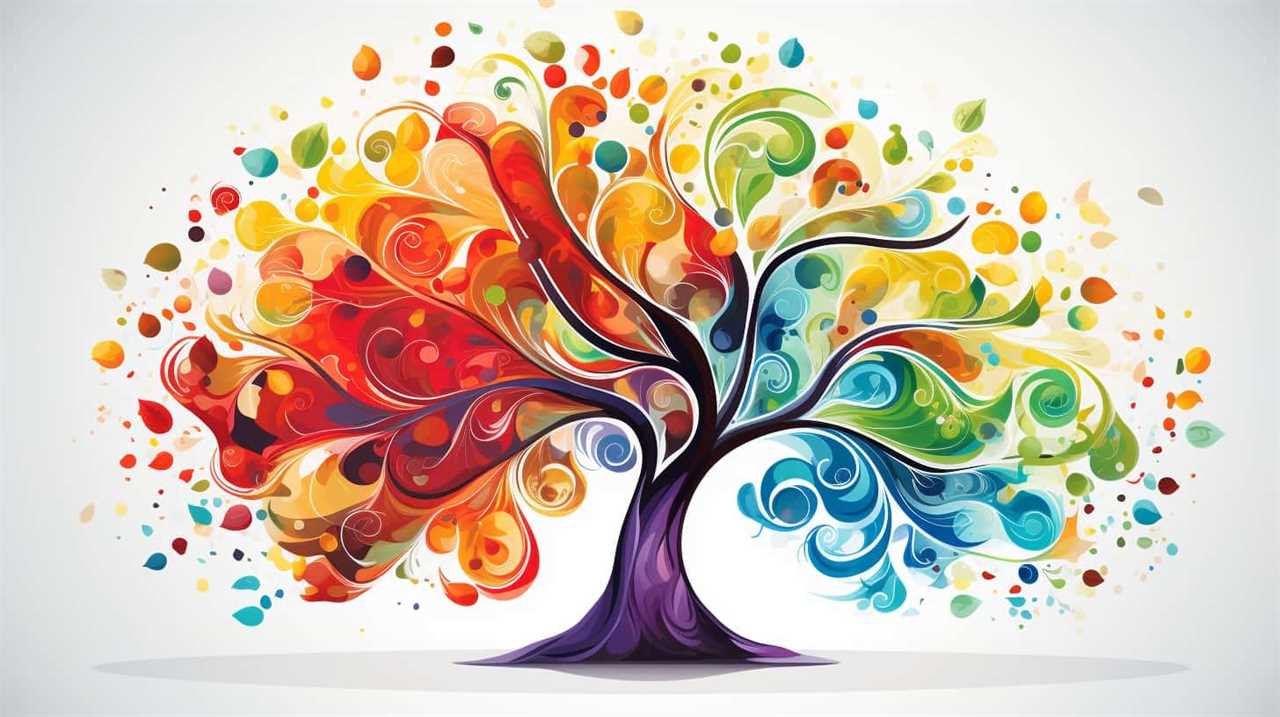
Furthermore, Kusama’s work has had a significant influence on mental health discussions, as her exploration of obsession and repetition resonates with individuals who’ve experienced similar struggles.
Lastly, her art has permeated popular culture, with her distinctive polka dots and immersive installations becoming instantly recognizable symbols of her artistic legacy.
Kusama’s Impact on Art
With her groundbreaking artistic vision and relentless exploration of themes such as identity and infinity, Kusama has revolutionized contemporary art and left an indelible mark on society. Her impact on contemporary aesthetics is undeniable, as she’s challenged traditional notions of art and introduced new ways of seeing and experiencing it.
Kusama’s influence on the feminist art movement can’t be overstated, as she’s been a pioneer in advocating for gender equality and empowering women through her art. By addressing issues of female identity and sexuality, she’s brought attention to the struggles and triumphs of women in a male-dominated society. Kusama’s art hasn’t only inspired other artists but has also sparked important conversations about gender, sexuality, and power dynamics.
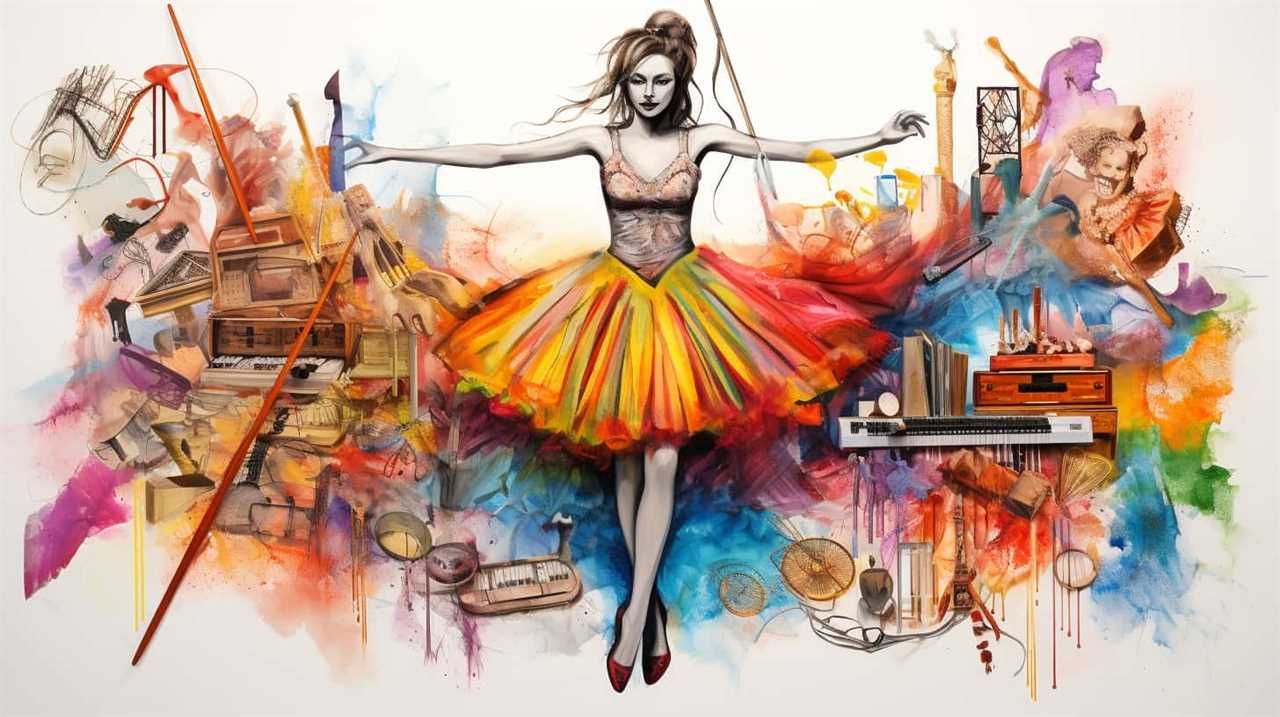
As we delve deeper into Kusama’s impact, it becomes clear that her exploration of mental health and self-expression will have a profound influence on society’s perception and understanding of these important issues.
Influence on Mental Health
In exploring Yayoi Kusama’s influence on contemporary society, we can discern the impact she’s had on mental health. Her artistic expression and advocacy have played a significant role in stigma reduction and the promotion of therapeutic benefits.
- Stigma reduction: Kusama’s openness about her own mental health struggles has helped break down the stigma surrounding mental illness. By sharing her experiences through her art, she’s encouraged others to speak out and seek help without fear of judgment.
- Therapeutic benefits: Kusama’s immersive installations, such as her famous Infinity Rooms, provide a meditative and transformative experience. These works have been shown to have a positive impact on mental well-being, offering a sense of calm and introspection.
- Inspiration and empowerment: Kusama’s art has inspired countless individuals to embrace their creativity as a form of self-expression and healing. Her work encourages people to explore their own emotions, thoughts, and experiences, fostering a sense of empowerment and liberation.
Through her art and activism, Yayoi Kusama has made a profound impact on mental health, challenging societal norms and promoting a more compassionate and inclusive society.
Role in Pop Culture?
Kusama’s impact on contemporary society extends beyond the art world. Her influence has permeated pop culture and shaped societal norms. Her artistic influence can be seen in various aspects of popular culture, from fashion to music to film.
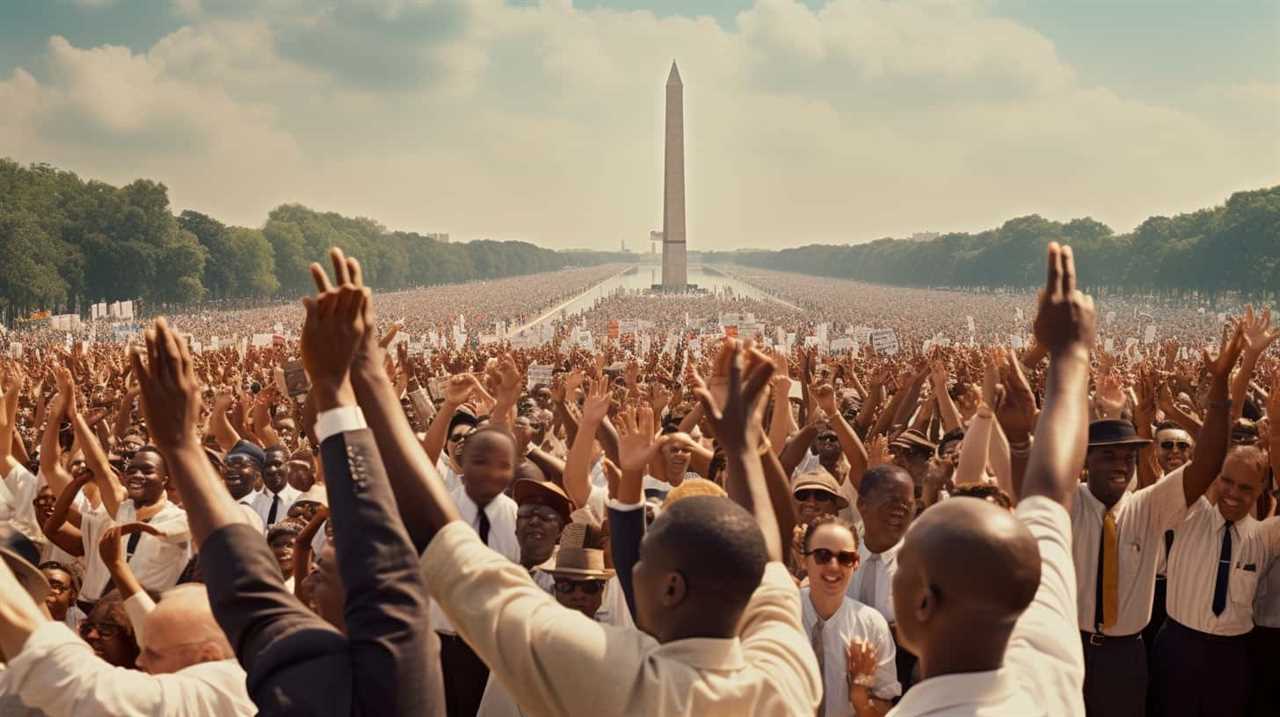
Kusama’s iconic polka dots and vibrant colors have become synonymous with her name. They have been adopted by designers and artists alike. Her unique artistic vision has had a profound cultural significance. It challenges traditional notions of beauty and pushes boundaries.
Through her work, Kusama has inspired a new wave of creativity and self-expression. She encourages individuals to embrace their uniqueness and celebrate diversity. Kusama’s influence on contemporary society is a testament to the power of art. It has the ability to shape and transform our culture.
Marina Abramović’s Reflections on Societal Transformation
As we explore Marina Abramović’s reflections on societal transformation, we begin to see the power of art as a mirror that reflects and challenges the values and norms of our society.
Through her thought-provoking performances, Abramović pushes the boundaries of what’s considered acceptable and prompts us to question our own beliefs and assumptions.
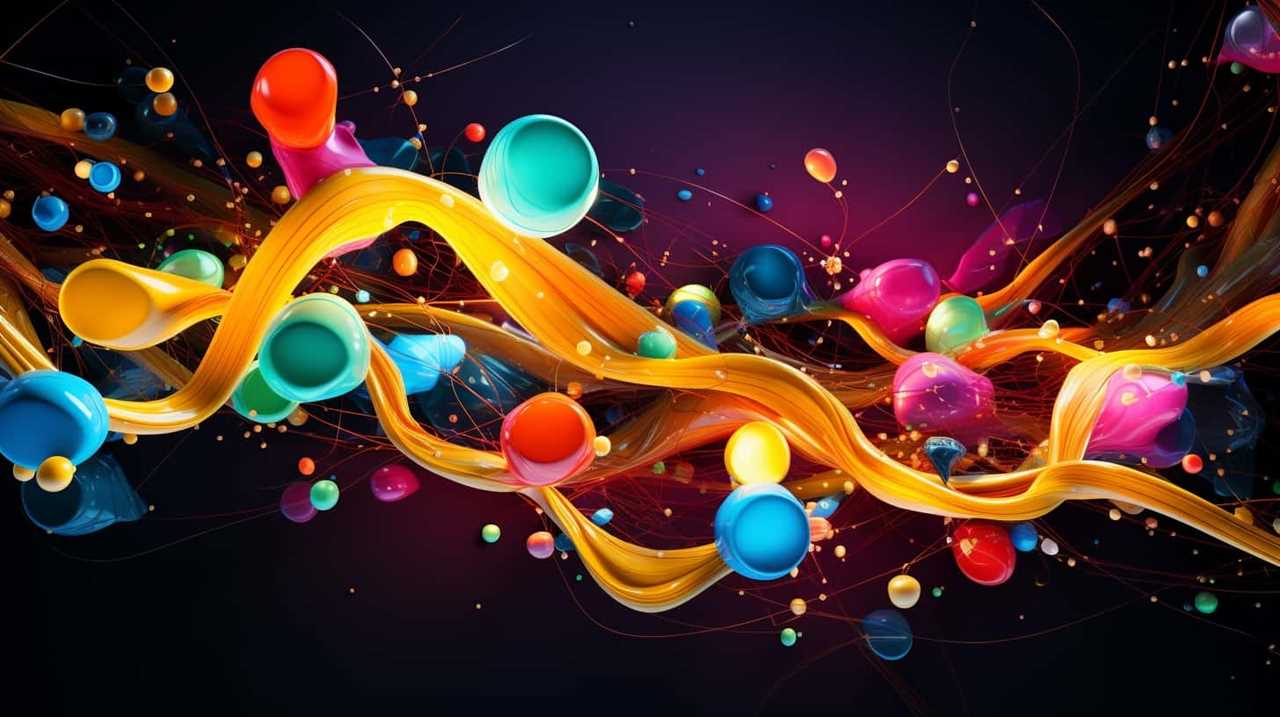
Additionally, she highlights the impact of technological advancements on our lives, prompting us to critically examine our relationship with technology and its influence on our daily experiences.
Ultimately, Abramović’s work reminds us of the transformative potential of performance art in shaping and reshaping the fabric of our society.
Art as Societal Mirror
Marina Abramović’s art reflects the transformation of society in several ways. Firstly, her artistic expression serves as a powerful tool for cultural commentary, mirroring the evolution of society in profound ways. Through her performances and installations, Abramović delves into themes of identity, vulnerability, and human connection, inviting audiences to confront their own emotions and experiences. Her work challenges societal norms and conventions, pushing boundaries and sparking conversations about the shifting values and beliefs of our time.
Three key ways in which Abramović’s art reflects societal transformation are:
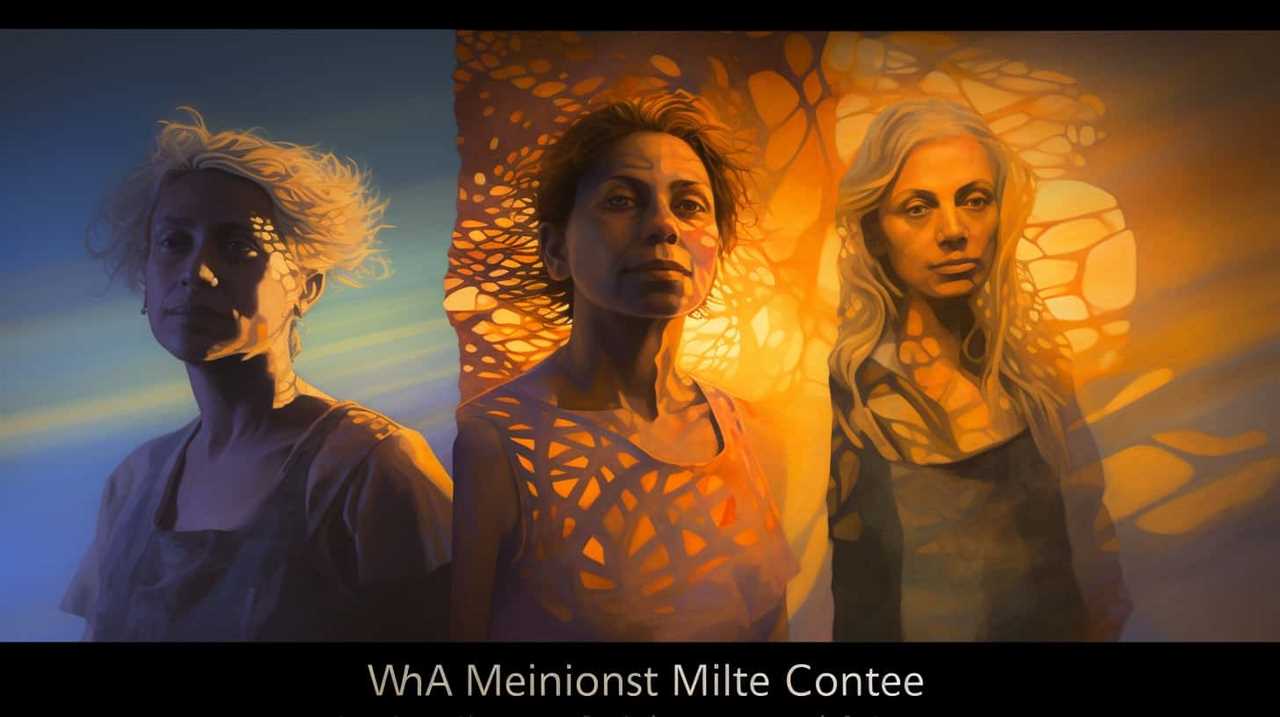
- Provoking introspection: Abramović’s performances often require active participation from viewers, encouraging them to reflect on their own emotions and experiences. By creating immersive and interactive art experiences, she challenges viewers to contemplate their place in the world and the impact of their actions.
- Challenging power dynamics: Abramović’s work questions traditional power structures and highlights the need for equality and empathy in society. Through her performances, she exposes the imbalances of power and calls for a reevaluation of social hierarchies. By doing so, she prompts conversations about the importance of inclusivity and the dismantling of oppressive systems.
- Addressing social issues: Abramović tackles topics such as gender, sexuality, and environmental concerns, shedding light on pressing social issues and promoting dialogue for change. By using her platform as an artist, she brings attention to marginalized communities and gives voice to those who are often unheard. Her work prompts conversations about social justice and encourages collective action.
Through her artistic practice, Marina Abramović holds up a mirror to society, inviting us to confront and engage with the transformations happening around us. Her art serves as a catalyst for change, challenging us to critically examine our beliefs and values, and inspiring us to actively participate in shaping a more inclusive and empathetic society.
Impact of Technological Advancements
One of the ways we can observe the impact of technological advancements on societal transformation is through Marina Abramović’s reflections on the subject. As a renowned performance artist, Abramović has witnessed firsthand the ways in which technology has shaped our society. She believes that technological advancements have not only revolutionized the way we communicate and interact with the world, but they have also deeply influenced our perception of reality and our understanding of human connection.
To illustrate this, let’s consider the role of education in the digital age. With the rise of online learning platforms and virtual classrooms, education has become more accessible than ever before. However, this convenience comes with ethical implications. As we rely more on technology for education, we must question the potential consequences of replacing human interaction with screens and algorithms. Are we sacrificing the richness of face-to-face learning experiences? Are we adequately preparing students for the challenges of the real world?
To shed light on the complex relationship between technology and society, let’s explore the following table:
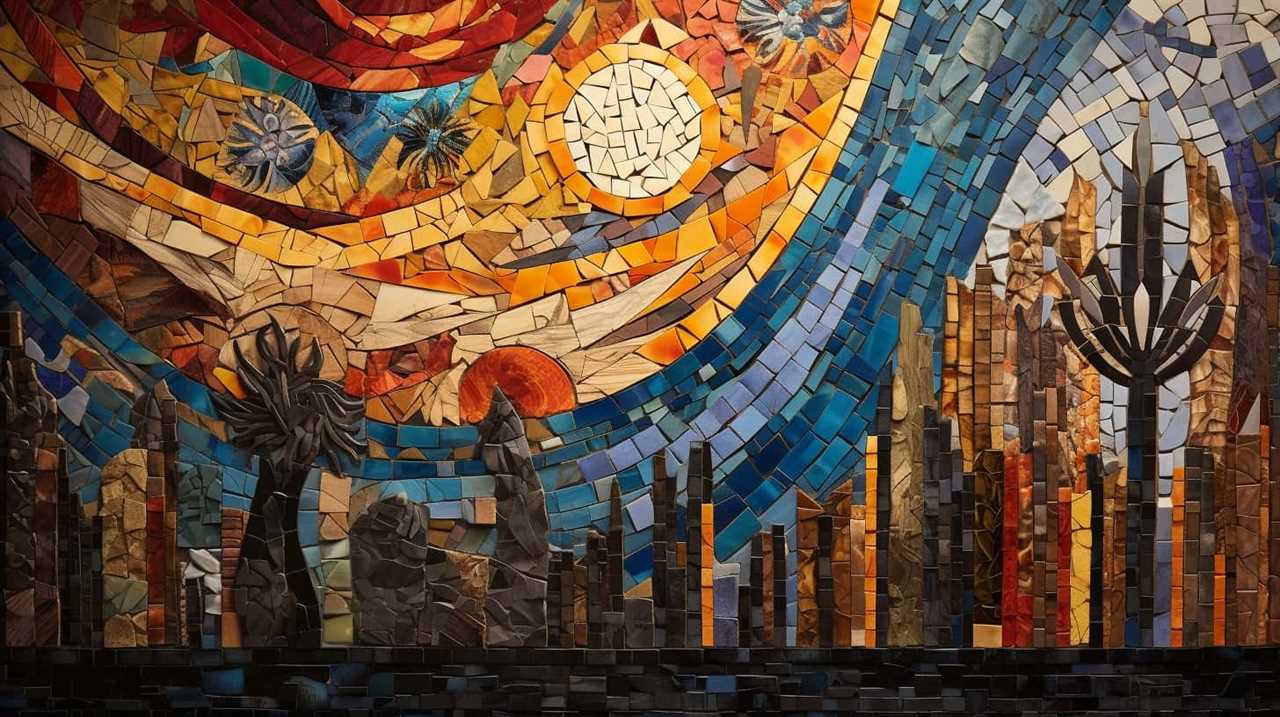
| Technological Advancements | Societal Transformation |
|---|---|
| Internet | Global connectivity |
| Social media | Digital identities |
| Artificial intelligence | Automation |
| Virtual reality | Escapism |
This table highlights the profound ways in which technology has shaped our society. The internet has connected people across the globe, breaking down barriers of distance and time. Social media has given rise to new forms of self-expression and the creation of digital identities. Artificial intelligence has revolutionized industries and led to automation, changing the nature of work. Virtual reality has provided an escape from reality, blurring the boundaries between the physical and virtual worlds.
As we continue to embrace technological advancements, it is crucial to critically examine their impact on society. The role of education becomes paramount in navigating this ever-evolving landscape. We must ensure that education equips individuals with the skills to thrive in a digital world while also fostering ethical values and human connection. By understanding the ethical implications of technology and actively shaping its development, we can create a future that balances progress with the preservation of our humanity.
Role of Performance Art
Technology has undoubtedly reshaped our society, but when it comes to the role of performance art in societal transformation, we must consider the profound impact it has had on our collective consciousness. Performance art has become a powerful tool for challenging the status quo and sparking dialogue on important social issues.
Here are three key ways that performance art has influenced our society:
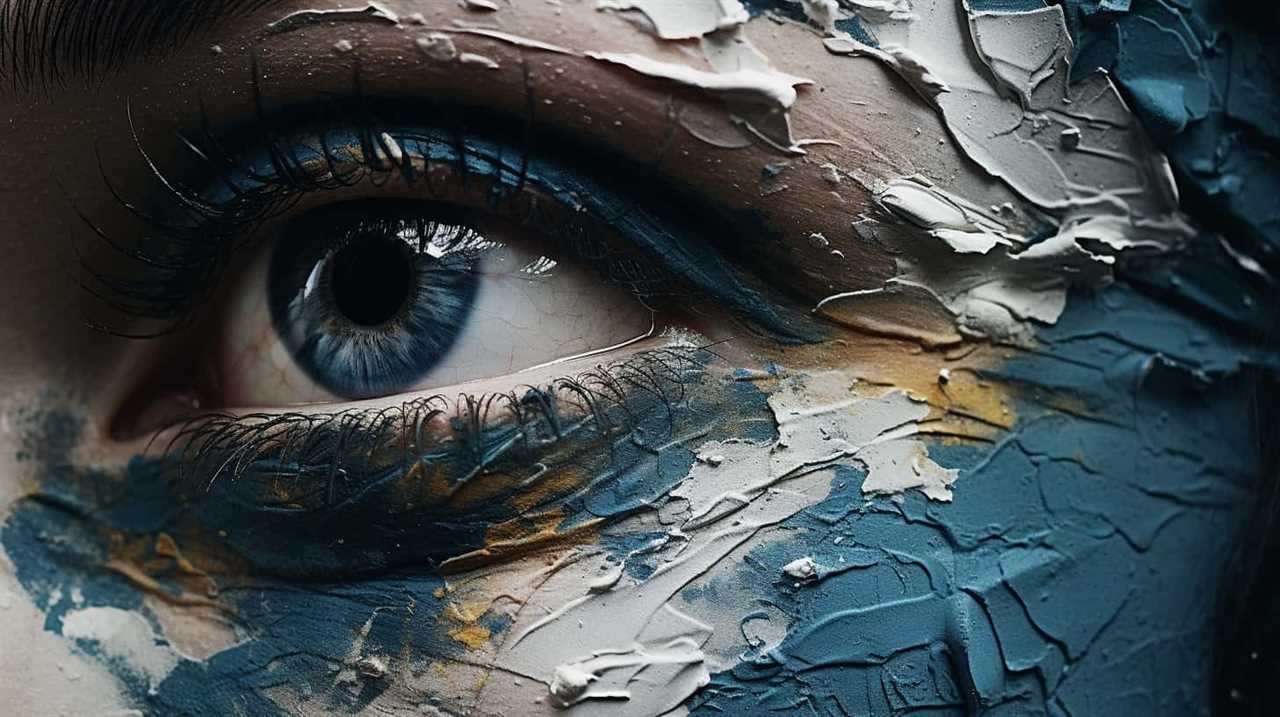
- Role in Education: Performance art goes beyond traditional classroom settings, offering a unique and engaging way to educate and inspire. By incorporating elements of theater, music, and visual arts, it allows students to explore complex concepts and express themselves creatively.
- Impact on Activism: Performance art has been a driving force behind many social movements. Through powerful performances, artists can raise awareness, provoke thought, and mobilize communities to take action for change.
- Transformation of Perception: Performance art challenges societal norms and pushes boundaries, forcing us to question our preconceived notions and biases. It encourages us to see the world from different perspectives, fostering empathy and understanding.
Now, let’s explore how jr’s art serves as a catalyst for social change.
JR’s Art as a Catalyst for Social Change
In our exploration of society’s evolution, we highlight the transformative power of JR’s art as a catalyst for social change. JR is renowned for his unique approach to art as activism, using the power of visual storytelling to shed light on important social issues. Through his large-scale public artworks, he challenges conventional norms and sparks conversations that push for positive change.
JR’s art goes beyond traditional forms of activism by using the streets as his canvas. His iconic black and white portraits, pasted on buildings, bridges, and even trains, have the ability to capture the attention of passersby and ignite a sense of curiosity and empathy. By bringing art out of galleries and into the public domain, JR’s work reaches a wider audience, transcending social boundaries and creating a collective experience.
The power of visual storytelling lies in its ability to evoke emotions, provoke thought, and inspire action. JR’s art confronts us with the realities of marginalized communities and encourages us to question societal norms. Through his powerful imagery, he challenges stereotypes, raises awareness about social injustices, and amplifies the voices of those who are often unheard.
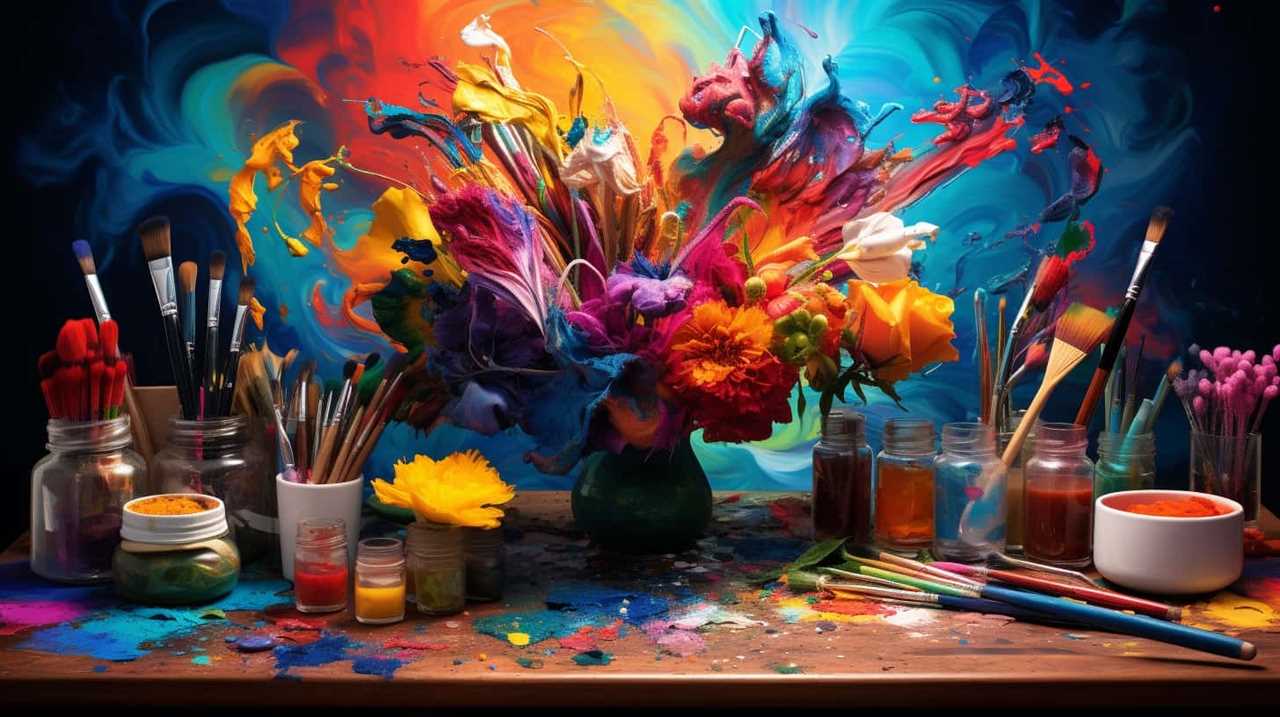
As we transition into exploring Kerry James Marshall’s exploration of racial politics, we can see how both artists use their work to address pressing social issues and promote dialogue towards a more inclusive and equitable society.
Kerry James Marshall’s Exploration of Racial Politics
Exploring Kerry James Marshall’s exploration of racial politics, we delve into the impactful ways he addresses and challenges societal perceptions through his art. Marshall’s work is a powerful exploration of representation, offering a commentary on identity and power dynamics. Here are three key aspects of his art that highlight his contribution to the discourse on racial politics:
- Nuanced Portrayals: Marshall’s paintings feature Black figures as the central subjects, providing a counter-narrative to the historical underrepresentation of Black individuals in art. Through his meticulous attention to detail, he captures the complexity and diversity of Black experiences, challenging stereotypes and expanding the possibilities of representation.
- Critique of Power Structures: Marshall’s art confronts the systemic inequalities and injustices that persist in society. By depicting scenes from everyday life, he exposes the power dynamics that perpetuate racial disparities. His work serves as a visual critique, urging viewers to question and challenge the status quo.
- Reclaiming Black History: Marshall’s art also seeks to reclaim and redefine Black history and culture. He references and reimagines significant moments and figures from Black history, highlighting their contributions and challenging the dominant narratives that have often marginalized them.
With his exploration of representation and commentary on identity and power dynamics, Kerry James Marshall’s art serves as a catalyst for change and a call to action.
Transitioning to the next section about Tracey Emin’s artistic response to cultural shifts, we continue our examination of how contemporary creatives shape and reflect societal evolution.
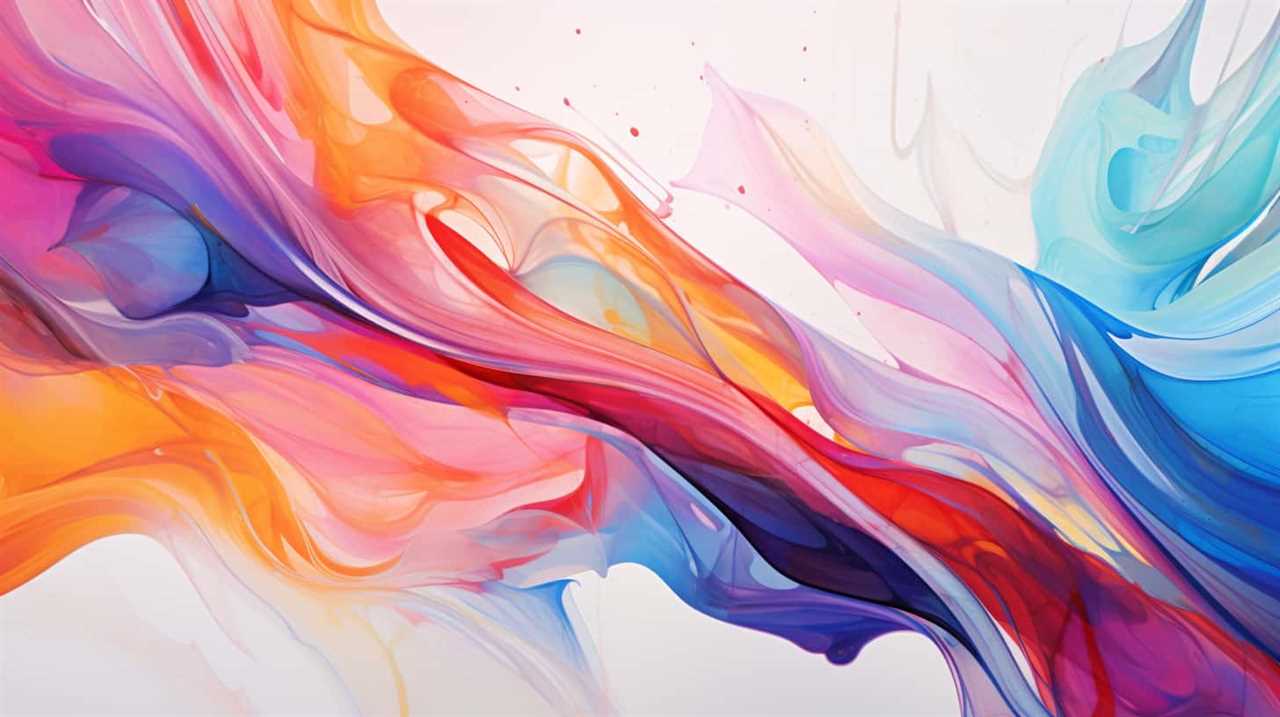
Tracey Emin’s Artistic Response to Cultural Shifts
Continuing our exploration of societal evolution through the lens of modern creatives, we now turn to Tracey Emin’s artistic response to cultural shifts. Emin, a renowned British artist, is known for her provocative and deeply personal works that serve as both artistic inspiration and cultural commentary.
Emin’s art is deeply rooted in her own experiences and emotions, reflecting the changing landscape of contemporary society. She fearlessly explores themes of love, sexuality, identity, and vulnerability, using a wide range of mediums including painting, sculpture, and installation art. Through her work, she challenges traditional notions of art and pushes the boundaries of what’s considered acceptable or taboo.
Emin’s artistic response to cultural shifts is characterized by her raw and unfiltered expression. She embraces the messiness and imperfections of life, using her art to confront social norms and challenge established power structures. Her work often serves as a mirror to society, forcing viewers to confront uncomfortable truths and exposing the underlying complexities of human existence.
In this way, Emin’s art becomes a powerful tool for cultural commentary. By sharing her own experiences and emotions, she invites viewers to reflect on their own lives and the broader societal changes happening around them. Her work sparks conversations, provokes thought, and encourages a deeper understanding of the world we live in.
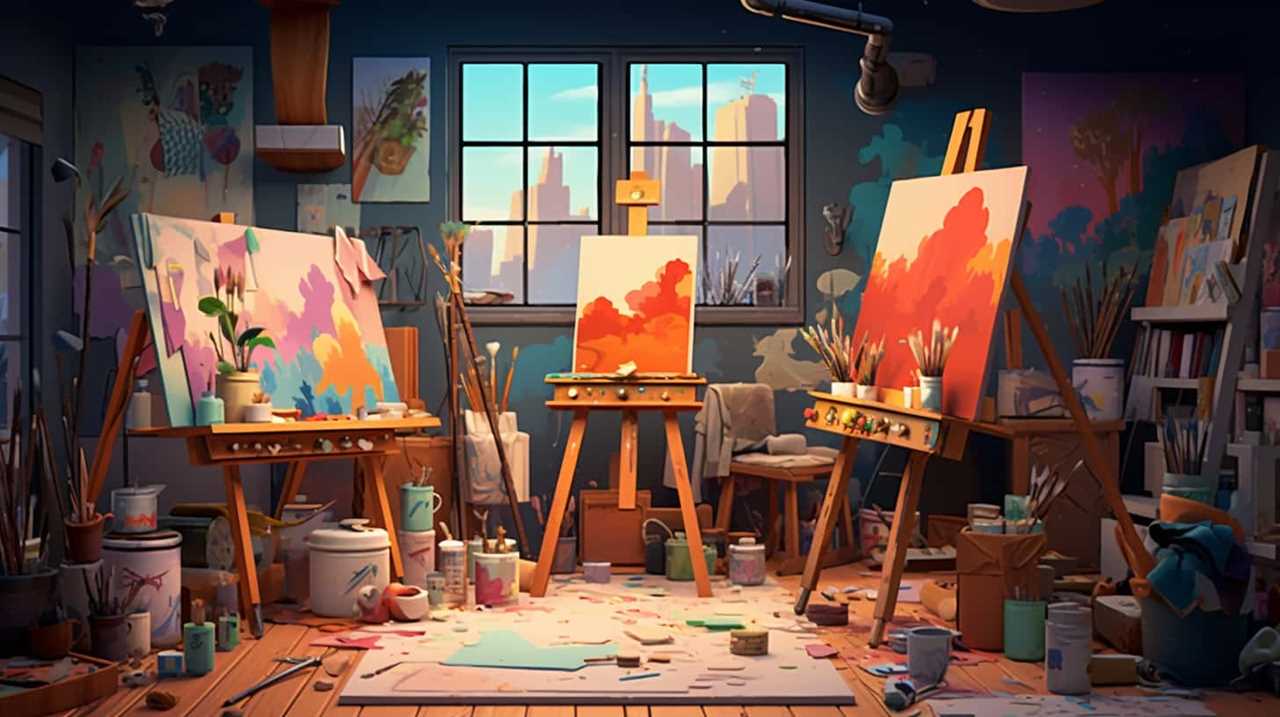
Through her artistic inspiration and cultural commentary, Tracey Emin continues to shape and contribute to the ongoing evolution of society. Her fearless and unapologetic approach challenges us to question the status quo, embrace our vulnerabilities, and strive for a more liberated and inclusive future.
Frequently Asked Questions
How Has Banksy’s Artwork Specifically Impacted Societal Change?
Banksy’s artwork has had a profound impact on societal change. His thought-provoking pieces challenge the status quo and ignite conversations about important issues. Through his artistic activism, Banksy has inspired a new wave of public art and empowered individuals to fight for liberation.
What Is Ai Weiwei’s Opinion on the Role of Art in Political Activism?
Ai Weiwei believes art is a powerful tool for political activism. He sees it as a weapon, capable of sparking change and challenging oppressive systems. Street art, like his own, can influence society’s evolution.
How Does Yayoi Kusama’s Artwork Connect With Contemporary Society?
Yayoi Kusama’s artwork connects with contemporary society through its exploration of the impact of social media on contemporary art and the intersection of mental health. It engages and informs while liberating our minds.
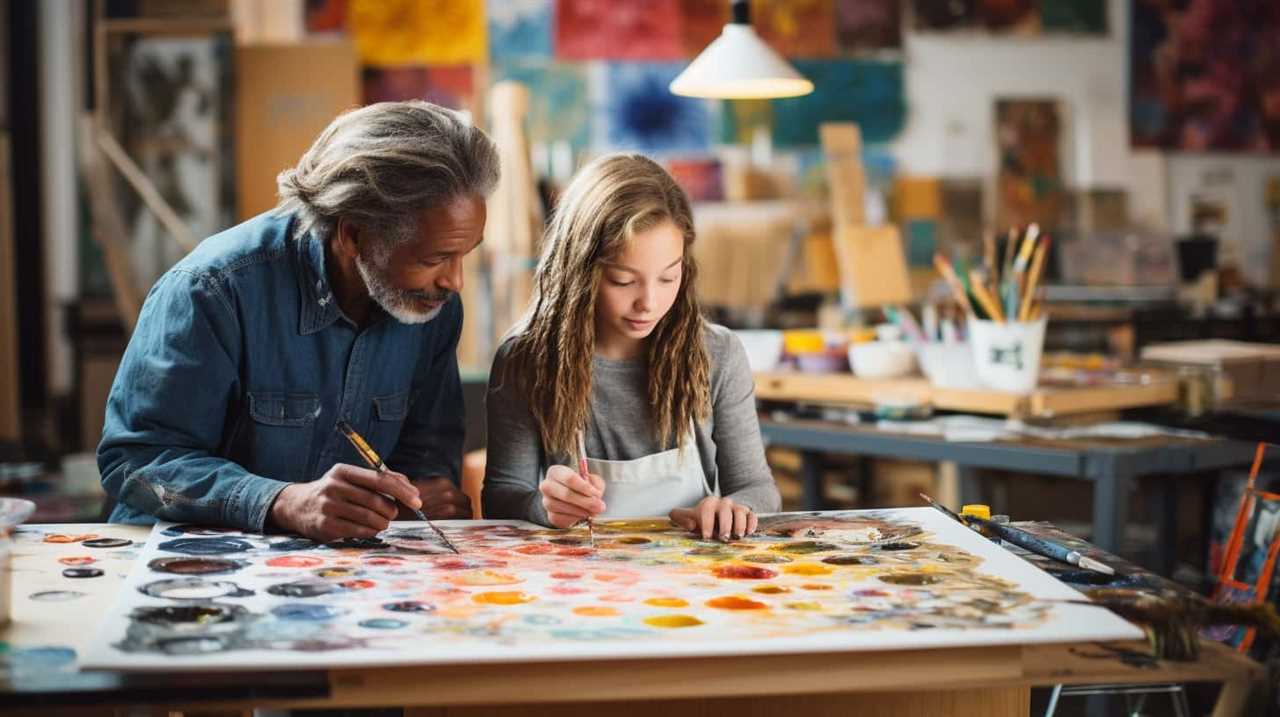
Can You Provide Examples of Marina Abramović’S Reflections on Societal Transformation?
Marina Abramović’s reflections on societal transformation are evident in her performances. Through her art, she pushes the boundaries and redefines what is possible, sparking a new perspective and inspiring liberation in our evolving society.
How Has Jr’s Art Specifically Served as a Catalyst for Social Change?
Jr’s art impact can be seen through his powerful use of large-scale installations and photography. His art techniques, such as wheatpasting, amplify the voices of marginalized communities, sparking conversations and driving social change.
How Do Emotions Impact Society’s Evolution According to Modern Creatives?
Modern creatives believe that the best emotion quotes from creatives hold immense power in shaping society’s evolution. They argue that emotions influence human behavior, which in turn affects societal progress. From love and empathy to anger and fear, emotions play a significant role in driving societal change and innovation.
Conclusion
So there you have it, folks. These modern creatives have shown us that art has the power to reflect and influence society’s evolution.
From Banksy’s thought-provoking street art to Ai Weiwei’s fearless political activism, each artist has left their mark on the world, challenging the status quo and sparking conversations.
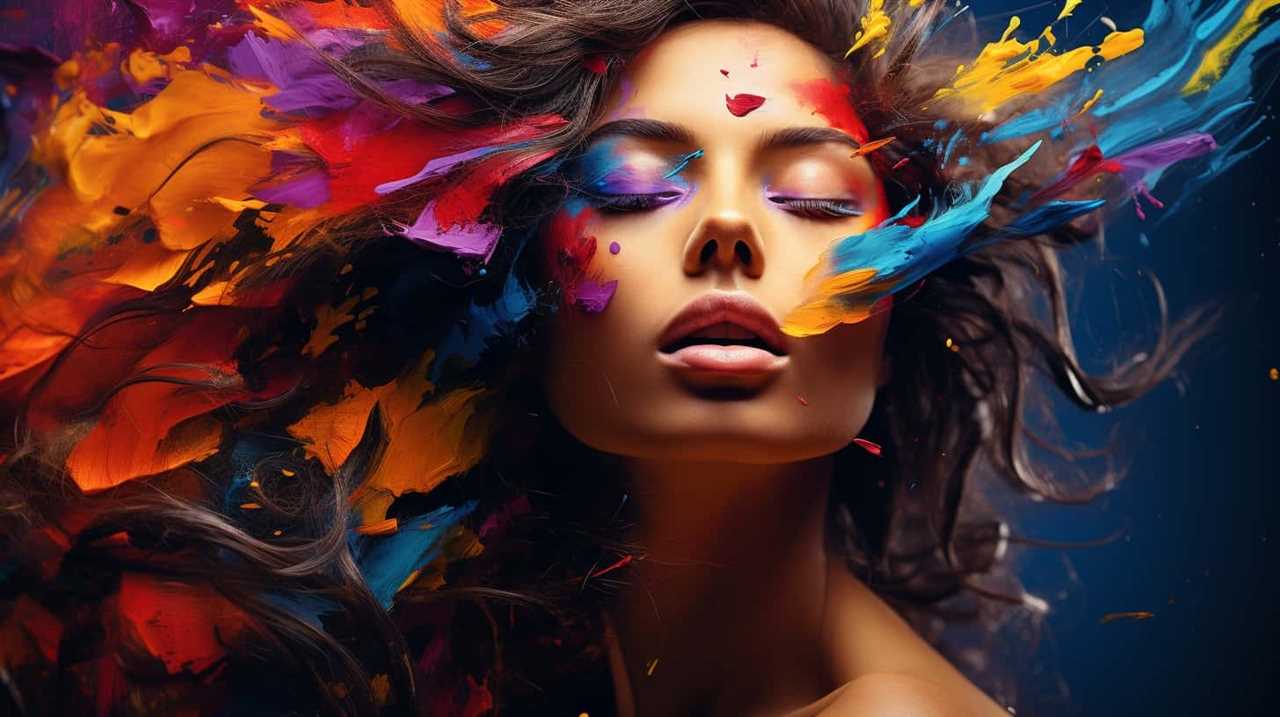
Yayoi Kusama, Marina Abramović, JR, Kerry James Marshall, and Tracey Emin have all used their art as a powerful tool for change.
Let’s embrace their creativity and continue to push the boundaries of society together.
Lauren’s talent in writing is matched by her passion for storytelling. Her love for books and deep understanding of culture and entertainment add a distinct flavor to her work. As our media and press contact, Lauren skillfully bridges the gap between afterQuotes and the broader media landscape, bringing our message to a wider audience.



